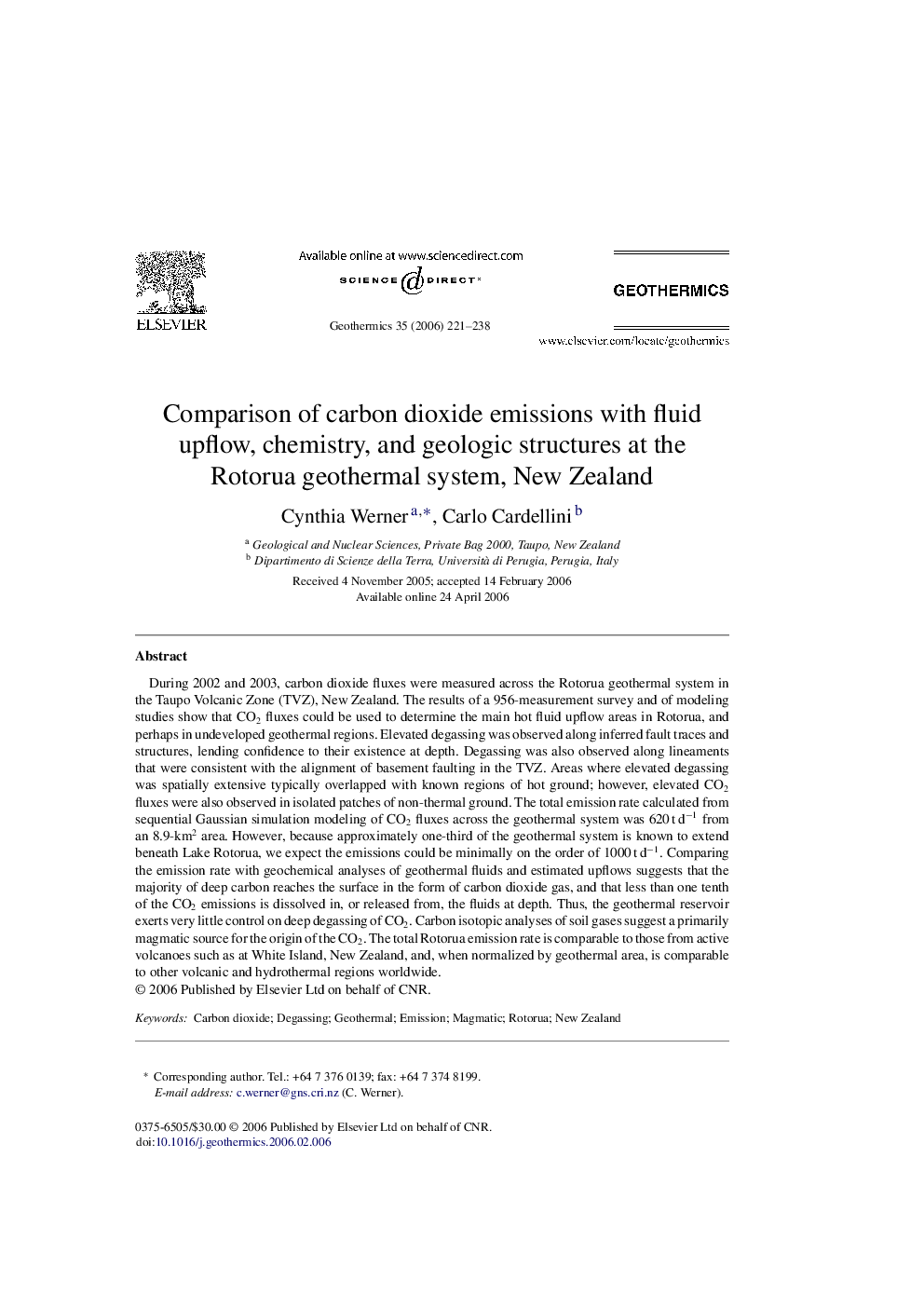| کد مقاله | کد نشریه | سال انتشار | مقاله انگلیسی | نسخه تمام متن |
|---|---|---|---|---|
| 1742707 | 1017711 | 2006 | 18 صفحه PDF | دانلود رایگان |

During 2002 and 2003, carbon dioxide fluxes were measured across the Rotorua geothermal system in the Taupo Volcanic Zone (TVZ), New Zealand. The results of a 956-measurement survey and of modeling studies show that CO2 fluxes could be used to determine the main hot fluid upflow areas in Rotorua, and perhaps in undeveloped geothermal regions. Elevated degassing was observed along inferred fault traces and structures, lending confidence to their existence at depth. Degassing was also observed along lineaments that were consistent with the alignment of basement faulting in the TVZ. Areas where elevated degassing was spatially extensive typically overlapped with known regions of hot ground; however, elevated CO2 fluxes were also observed in isolated patches of non-thermal ground. The total emission rate calculated from sequential Gaussian simulation modeling of CO2 fluxes across the geothermal system was 620 t d−1 from an 8.9-km2 area. However, because approximately one-third of the geothermal system is known to extend beneath Lake Rotorua, we expect the emissions could be minimally on the order of 1000 t d−1. Comparing the emission rate with geochemical analyses of geothermal fluids and estimated upflows suggests that the majority of deep carbon reaches the surface in the form of carbon dioxide gas, and that less than one tenth of the CO2 emissions is dissolved in, or released from, the fluids at depth. Thus, the geothermal reservoir exerts very little control on deep degassing of CO2. Carbon isotopic analyses of soil gases suggest a primarily magmatic source for the origin of the CO2. The total Rotorua emission rate is comparable to those from active volcanoes such as at White Island, New Zealand, and, when normalized by geothermal area, is comparable to other volcanic and hydrothermal regions worldwide.
Journal: Geothermics - Volume 35, Issue 3, June 2006, Pages 221–238